Power-transmission (PT) components include essentials such as chain, springs, seals, and retaining devices, to name a few. There are three main trends that have dominated recent innovation in their design and application. New materials in mechanical parts continue to expand the applications in which all components operate effectively. Compression and wave springs are specified in more customized versions than ever, tying to a larger move away from off-the-shelf components. Finally, demand for longer life is spurring advances in lubrication to 21st-century formulations.
In fact, all mechanical designs must satisfy ever-changing industrial design needs, but here we detail advances that industry professionals see dominating these power-transmission assemblies.

IoT on belt drives and digital design help elsewhere
Internet of Things (IoT) and Industry 4.0 functionality is touching even mature power-transmission technologies to boost design performance.
“The rising tide of IoT could mean that larger (and more mission-critical) power-transmission drives could soon include widespread placement of sensors,” said Arron Ryan, product engineer at Thermoid, manufacturer of rubber products including belting and hose. “On conveyor belting as well as power-transmission belting, the sensors would fit onto pulleys to measure performance and wear factors — including changes in groove ride height and rates of efficiency,” Ryan continued.
There are already sensor systems available (albeit at higher price points) that can capture inputs such as run time, temperature, and vibration. “But technology enhancements such as this on a large scale could soon provide designers of drives with big data to design longer-lasting products with higher efficiencies and reduced maintenance,” Ryan of Thermoid concluded.
Another form of improved service from digital data is the proliferation of online configuration tools. These are changing how design engineers specify all offerings in the power-transmission and motion-control space — in part because service expectations in the industrial market are ultimately influenced by what’s come to be expected from the consumer market.
“Online configurators for clothing and other consumer products give users quick leadtimes and the ability to get price and delivery without ever talking to someone. Now these B2C online-purchasing trends are informing the design of configuration tools that have become integral to the B2B engineering-design process,” said Mike Parzych of GAM Enterprises.
Right now, a GAM online sizing tool lets engineers specify components that are compatible with their servomotor. The tool is integrated with an online catalog and CAD configurator. The manufacturer is also looking to add options and customizable capabilities to the latter. “Our products are configurable, and we want our models to reflect that,” said Parzych.
Visit linearmotiontips.com and read our trends piece on online configuration tools for more on what’s on the horizon here.
New installations for retaining rings and wave springs
Over the last several years, there’s been a slow trend to replace threaded fasteners (and the tapping and drilling they entail) with retaining rings. These fasteners installed into assemblies at preset shaft or housing grooves that function as shoulders to keep an assembly together. What’s more, material advancements continue to improve these as well as other spacers, pins, and washers.

Case in point: Finishing with affordable zinc thermal diffusion is better than ever for finishing parts with a sacrificial surface of zinc-iron diffusion. Now mechanical-component suppliers are applying one newer patented version of the process called ArmorGalv. Fastener company SPIROL is one adopter.
In short, ArmorGalv coating applies at 650˚ F or higher in a closed chamber. The part bakes in a closed environment filled with zinc vapor. Soluble in iron, the zinc diffuses into the ferrous part in a near-zero-emissions process. The coating is anodic to steel, so makes for long-lasting galvanic protection. After baking, sometimes the parts get additional application of sealant. Benefits include anti-galling, uniform coating, and no embrittlement.
Another trend affecting fasteners is the unabated drive towards miniaturized designs. This forces the shrinking of assemblies — including all their fasteners and compression and wave springs. Consumer electronics and medical-device industries are driving much of the innovation in this department.
In some cases, simply switching to compact compression springs or from conventional helical-wound springs to wave springs in sufficient. That’s because these apply more load for a given volume — which is useful in the tight spaces inside implantable medical devices, for example. In fact, even disposable surgical applications are driving engineers to design smaller instruments, as there’s more interest than ever in making surgeries less invasive. That’s turning many inpatient procedures to outpatient procedures — a win for all.
Behind some of this is how technological advances now let developers make wave springs smaller than 0.250 in. in diameter … enabling smaller tools in other industries as well. Even cordless drills and other consumer power-tool designs benefit.
Bespoke lubrication formulas (and mechanical design) for better PT performance
Some lubricant suppliers are looking to solve mechanical challenges from the tribological front — and they’re taking cues from an industry that’s increasingly service-oriented. “Several years ago, a new concept was born within our technical organization,” said Jason Galary, engineering development and applications manager at Nye Lubricants. The idea was to create technical competency and functionality for bridging a gap between R&D and product development. “This new functionality focuses on developing a better understanding of the fundamentals of applied tribology and combining this with simulations of customer applications,” explained Galary.

Usually in industry, the supplier identifies or develops lubrication solutions for the OEM or end user, and then ships lubricant samples out to the customer for testing. Such tests are based on physical property data and the experience of technical support and sales engineers. But such an approach burdens the OEM or user with testing and upfront cost. “We moved away from this by creating Nye’s Applications Development and Validation Testing (ADVT) group,” explained Galary.
The ADVT lab now focuses on two modes of testing — component testing (and simulation) as well as applied mechanics.
“Through stronger understanding of how lubrication systems function in dynamic applications, we can more accurately predict performance and supply better lubricant,” said Galary. This helps users trim research, development, and testing time, in turn reducing product cost.
Consider one example for the semiconductor-manufacturing industry and how the lubricant supplier developed a particle-generation test method and apparatus.

“The thought of particle generation is one that haunts many engineers’ minds, especially if they’re working on applications in the vacuum industry,” said Galary. Foreign particles of unknown or dubious nature drifting through the air (or traveling through vacuum) might deposit on critical areas such as a semiconductor fab, and cause extremely costly problems as a result. “But our new test method measures the amount of airborne particulate generated by a lubricant from rolling contact as in a ballscrew or bearing,” said Galary. “That lets us classify a grease to an ISO or federal air-cleanliness standard.” That in turn lets users know just how many particles are being generated in their cleanroom, so they can pick a material to match their cleanliness requirements.
In fact, it’s not just the formulation of lubricants. All motion-component suppliers we surveyed mentioned some expansion of in-house engineering support. Some who supply mechanical-design services base much of their business on it — mostly to eliminate problems associated in the past with integration.

“Customization is in GAM’s DNA. Our mission is to give customers what they want, even in small batches and at a value,” said Craig Van den Avont, president at GAM Enterprises, manufacturer of gear reducers, couplings, linear-mounting kits, and other automation products. The manufacturer works with design engineers to understand their application, requirements, and machine assembly. Then it seeks ways to combine or modify standard products (or manufacture other components) so OEMs or end users can build a better machine or optimize to application requirements.
“We’ve had to align all our business functions to properly support these projects,” said Van den Avont. Last year for example, the company expanded in-house manufacturing capabilities with customization and flexibility in mind. “Ultimately, we act as an extension of our customers’ engineering departments by helping them eliminate components, save space, reduce costs, and increase machine performance,” added Van den Avont.

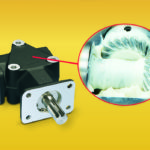
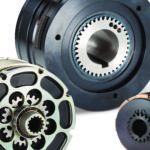
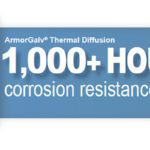
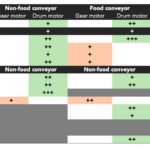
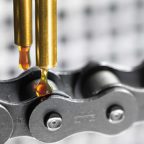

Leave a Reply
You must be logged in to post a comment.